My lone male intermedius:
![Click the image to open in full size.]()
Old picture of him transporting from when he and the now deceased female were breeding.
![Click the image to open in full size.]()
Picture of the male today after reintroducing him to the freshly ant-free vivarium.
The intermedius vivarium:
![Click the image to open in full size.]()
![Click the image to open in full size.]()
This tank has been running for nearly two years now, and the now solo male intermedius has lived in it for almost as long. This is an older photo from many months ago--the some plants have overgrown, some plants have been removed, and some plants, like the Billbergia in the corner, rotted from too much moisture. I'd take a new picture, but it's looking a bit hideous right now--I had to tear it apart a bit and remove a lot of plants to combat a recent invasion of Argentine Ants that were trying to settle in. I thought I'd made the vivaria ant-proof, but all it took was a piece of ceiling trimming leaned carelessly against the vivarium by a family member to start yet another nightmarish situation. I'm now contemplating tearing it all apart and replanting it now that I've pretty much ripped out what had been growing in there.
The largest and boldest of the varaderos:
![Click the image to open in full size.]()
I suspect it's a female based on how it interacts with the known male and female. It'll follow the male if he's calling, and the confirmed female will attack it if it wanders into her territory.
The varadero vivarium:
![Click the image to open in full size.]()
First varadero tadpole:
![Click the image to open in full size.]()
There were initially two eggs developing, but one died and molded over just a few days short of hatching out.
They got around to settling in and breeding very quickly, certainly a lot faster than it had taken my intermedius to do so when I first got them. The male is a little shy but extremely vocal--he'll call all day long and often into the night, but he'll do it from out of view more than half of the time. Is it my imagination, or do the varadero seem to call much louder than the intermedius?
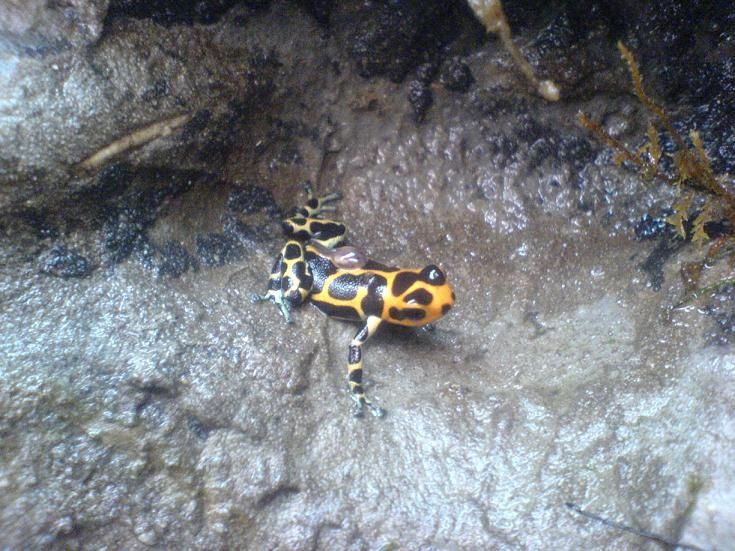
Old picture of him transporting from when he and the now deceased female were breeding.

Picture of the male today after reintroducing him to the freshly ant-free vivarium.
The intermedius vivarium:
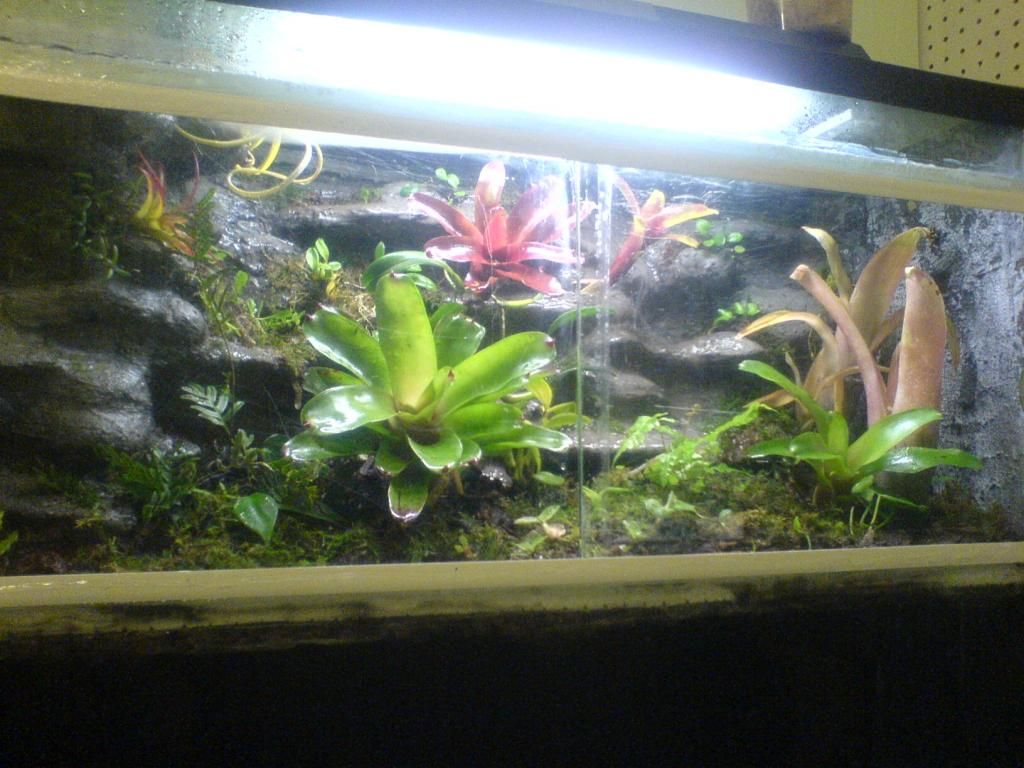
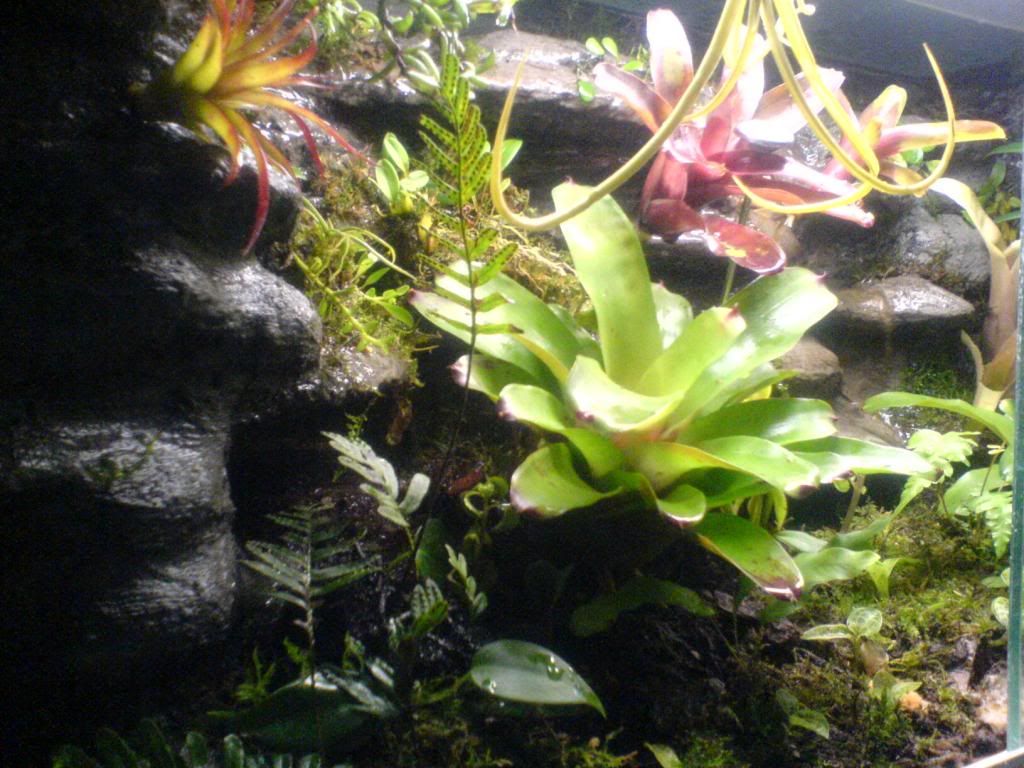
This tank has been running for nearly two years now, and the now solo male intermedius has lived in it for almost as long. This is an older photo from many months ago--the some plants have overgrown, some plants have been removed, and some plants, like the Billbergia in the corner, rotted from too much moisture. I'd take a new picture, but it's looking a bit hideous right now--I had to tear it apart a bit and remove a lot of plants to combat a recent invasion of Argentine Ants that were trying to settle in. I thought I'd made the vivaria ant-proof, but all it took was a piece of ceiling trimming leaned carelessly against the vivarium by a family member to start yet another nightmarish situation. I'm now contemplating tearing it all apart and replanting it now that I've pretty much ripped out what had been growing in there.
The largest and boldest of the varaderos:

I suspect it's a female based on how it interacts with the known male and female. It'll follow the male if he's calling, and the confirmed female will attack it if it wanders into her territory.
The varadero vivarium:
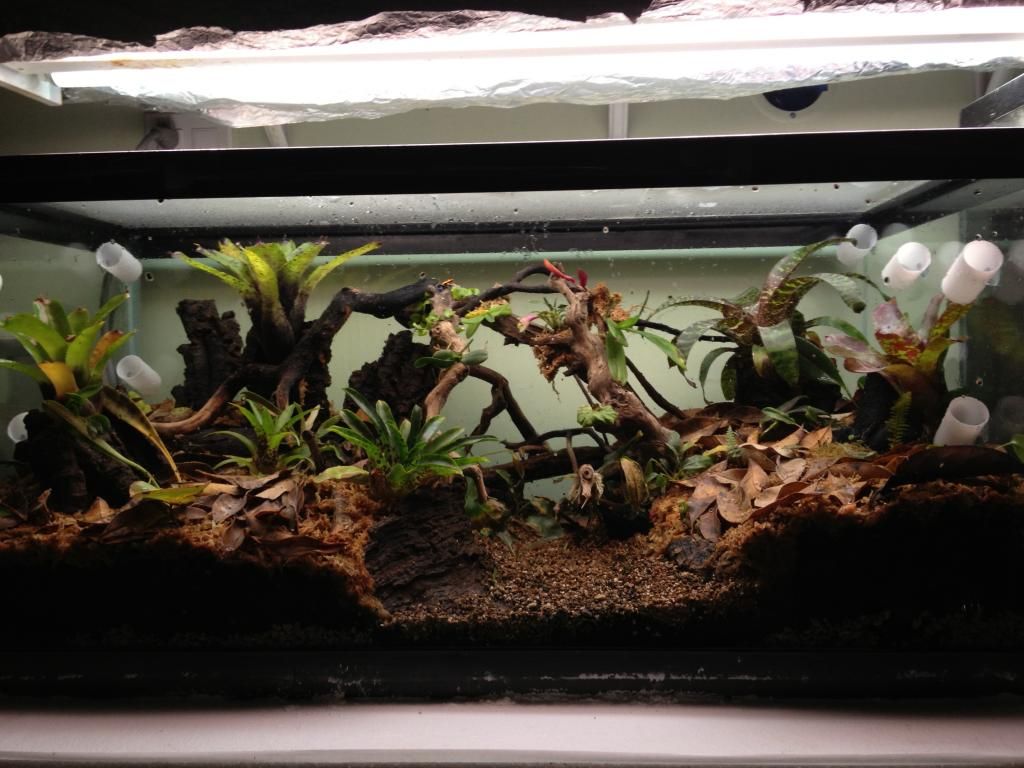
First varadero tadpole:
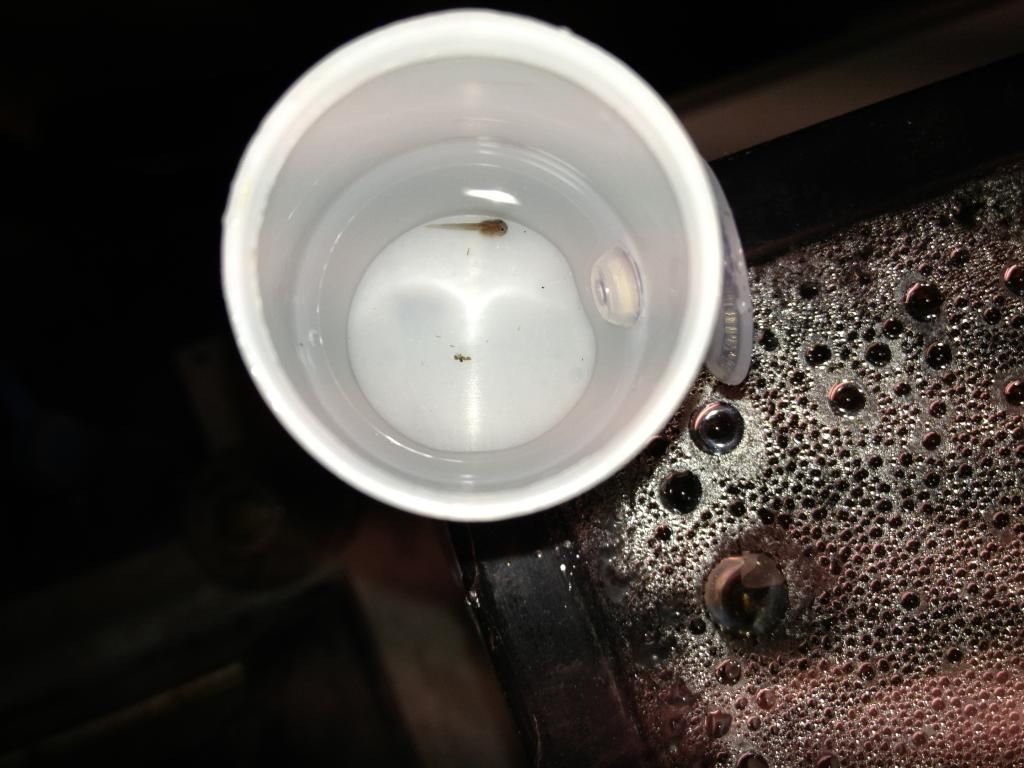
There were initially two eggs developing, but one died and molded over just a few days short of hatching out.
They got around to settling in and breeding very quickly, certainly a lot faster than it had taken my intermedius to do so when I first got them. The male is a little shy but extremely vocal--he'll call all day long and often into the night, but he'll do it from out of view more than half of the time. Is it my imagination, or do the varadero seem to call much louder than the intermedius?